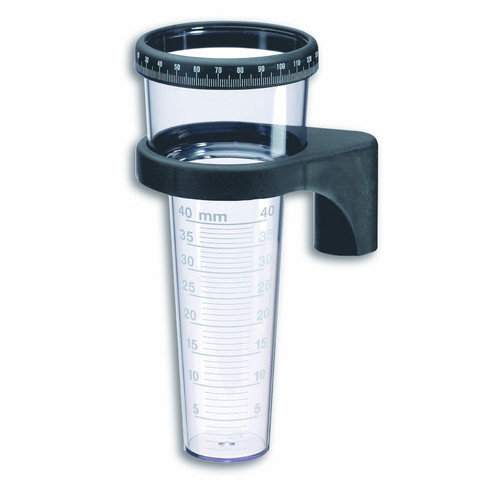Why Every Homeowner Must Consider Buying a High-Accuracy Rain Gauge
Why Every Homeowner Must Consider Buying a High-Accuracy Rain Gauge
Blog Article
Revealing the Science Behind Rainfall Assesses: Just How These Tools Play a Vital Function in Environment Study and Ecological Tracking
Rainfall evaluates, seemingly simple gadgets, hold an extensive importance in the realm of environment study and environmental surveillance. These unassuming instruments quietly gather one of nature's most essential aspects-- rains. Yet, behind their unpretentious exterior lies a complicated science that is crucial for understanding the dynamics of our setting. As we peel back the layers of this clinical veil surrounding rain evaluates, we uncover a globe where accuracy, information accuracy, and careful observation converge to unveil a much deeper understanding of our altering climate and its influence on the planet.
Importance of Rain Scales
Rainfall assesses play an indispensable duty in tracking and gauging precipitation levels, providing essential information for environment study and evaluation. These tools are basic in measuring the quantity of rainfall that occurs in a specific location over a certain duration. By accumulating and determining rainwater, rain gauges offer useful understandings into the distribution and intensity of rainfall, assisting meteorologists, hydrologists, and climatologists in understanding weather patterns and fads.
In addition, long-term data collected from rainfall evaluates assists in evaluating environment change influences and patterns, adding significantly to scientific study and decision-making processes. In essence, rainfall gauges serve as crucial tools in the field of weather forecasting and ecological scientific research, playing a crucial duty in progressing our understanding of climate and climate dynamics.
Types of Rain Gauges

Capability and Procedure
In the world of environment research study and meteorological research studies, the performance of rainfall gauges lies in their intricate performance and accurate operational systems. Rainfall assesses are made to precisely determine the amount of rainfall that falls over a particular area during a set duration.
The functionality of rainfall evaluates is based on the concept of collecting and measuring rain in a standardized manner. This accumulated information is essential for understanding local weather patterns, tracking lasting environment fads, and assessing ecological influences. To guarantee exact dimensions, rain assesses requirement to be tactically placed in open areas far from obstructions such as structures or trees that can hinder straight from the source the collection procedure.
The functional element of rain gauges entails regular maintenance to stop debris buildup, calibration checks to maintain measurement precision, and information videotaping for evaluation (rain gauge). On the whole, the performance and procedure of rain gauges are necessary for collecting reputable precipitation data vital to environment study and environmental surveillance
Role in Environment Research
Given the vital relevance of precise precipitation dimensions in recognizing climate patterns and ecological impacts, the role of rainfall evaluates in climate study is vital. Rainfall assesses offer vital information for climate research by quantifying the amount of precipitation that falls over a certain area throughout a provided period. This data is critical for monitoring lasting patterns in precipitation patterns, evaluating the impact of climate modification on rains circulation, and boosting environment versions.

Environment researchers make use of data gathered from rain assesses to analyze variants in rainfall levels, identify regional environment patterns, and assess the performance of water resource management methods. By comparing historical rainfall data with existing measurements, scientists can discover changes in precipitation patterns, such as adjustments in the frequency or strength of rains occasions. This information is essential for recognizing just how climate change is influencing precipitation characteristics and can aid policymakers make notified decisions concerning adaptation and mitigation methods.
Applications in Ecological Surveillance

In flood projecting, rain gauge information assists to track rainfall intensity and distribution, allowing authorities to issue prompt cautions and take necessary steps to reduce flooding risks (rain gauge). Dry spell tracking counts on rainfall scale information to examine wetness levels in the soil and track precipitation deficiencies, assisting in the identification of drought-prone locations and the application of drought reaction methods
Additionally, rain gauge data plays a crucial duty in water source management by giving info on water schedule and usage patterns. This information is made use of to make informed decisions relating to water allotment, preservation actions, and sustainable water resource preparation. Furthermore, in farming, rain gauge data assists farmers description in optimizing irrigation timetables, plant choice, and total ranch administration methods based upon regional rainfall patterns. In general, rain gauges are vital devices in environmental surveillance, using important understandings that contribute to notified decision-making and sustainable resource management.
Conclusion
To conclude, rain gauges are important tools for determining rainfall, supplying beneficial information for environment study and ecological monitoring. With various types and capabilities, rainfall gauges play a critical role in understanding precipitation patterns and their influence on their explanation the environment. By precisely measuring rains, these tools add to the improvement of clinical understanding and aid in making notified choices associated to water resource monitoring and disaster preparedness.
Rain assesses play a crucial function in surveillance and measuring rainfall levels, giving essential information for climate research and analysis. The common rain gauge, known as the "tipping container" scale, is one of the most frequently made use of gadgets. Ultrasonic rain determines use audio waves to discover the existence of rainfall, offering real-time information on rainfall degrees.Environment researchers make use of information gathered from rainfall determines to assess variations in precipitation degrees, recognize regional environment fads, and evaluate the performance of water resource monitoring strategies.In verdict, rainfall assesses are necessary tools for gauging precipitation, giving beneficial data for environment research and environmental surveillance.
Report this page